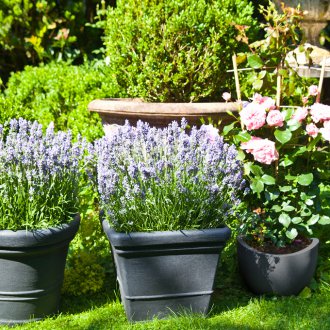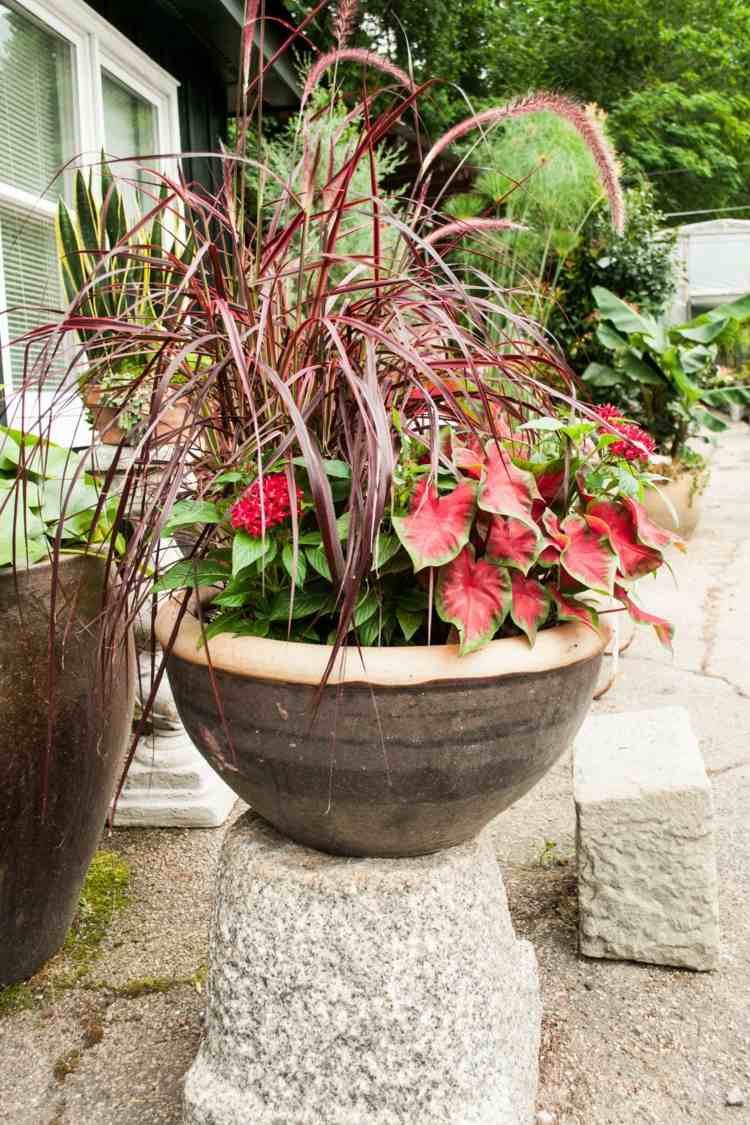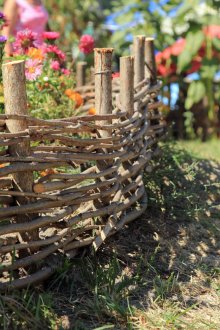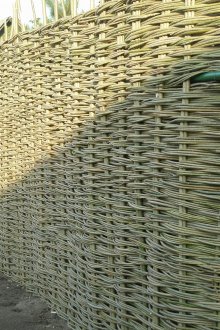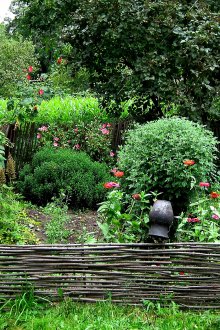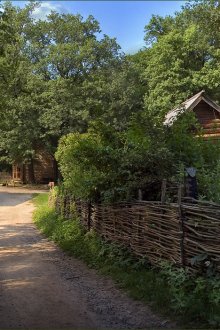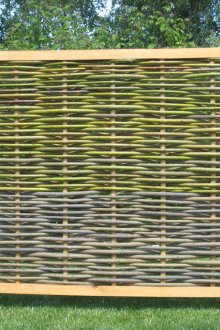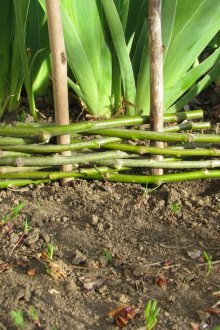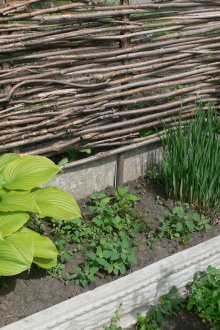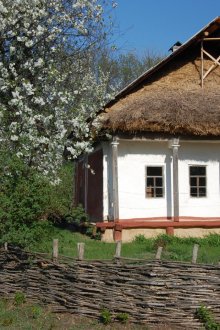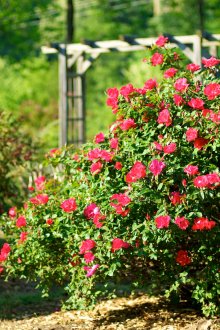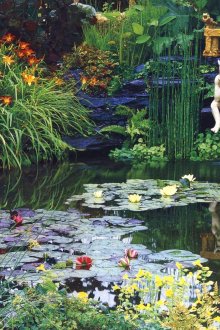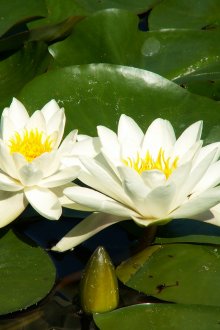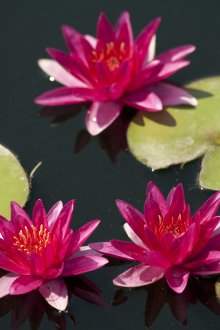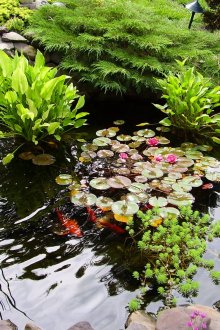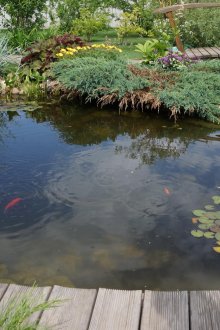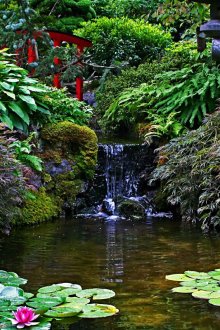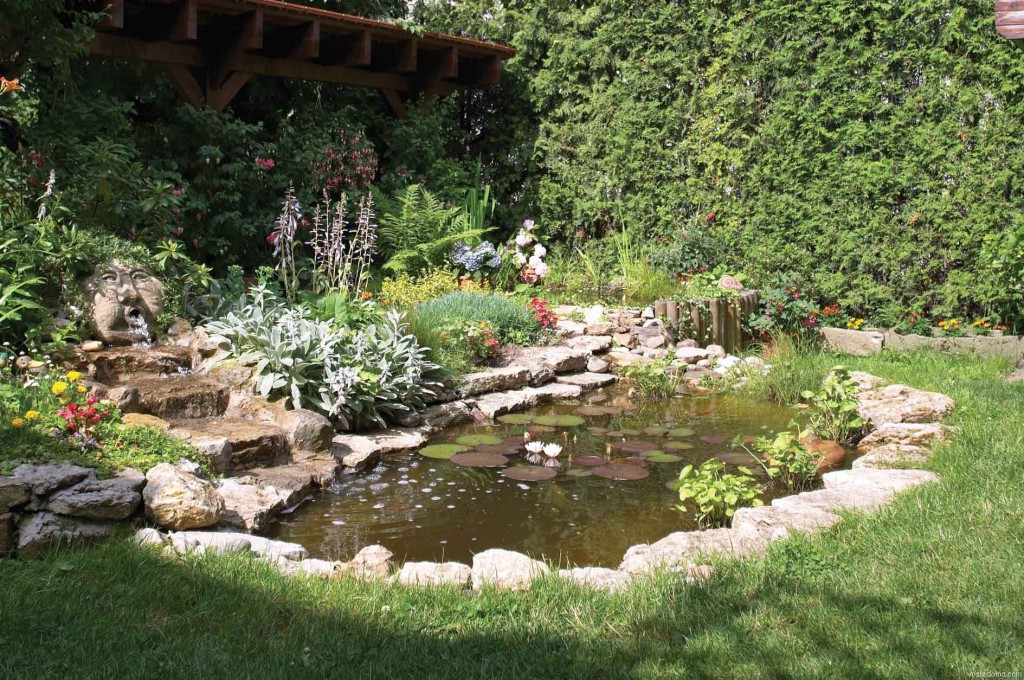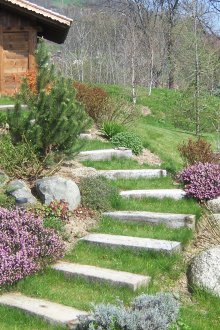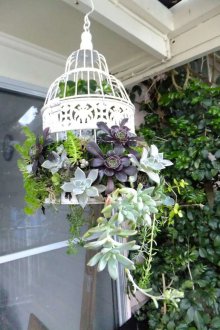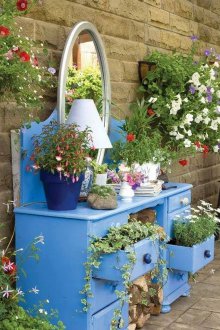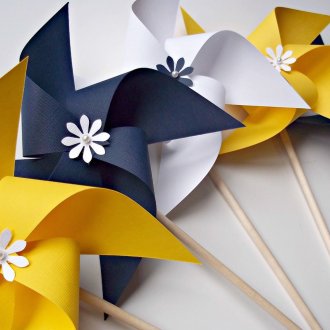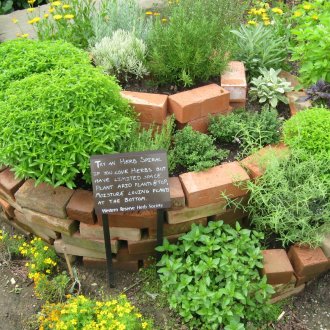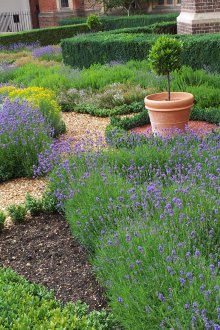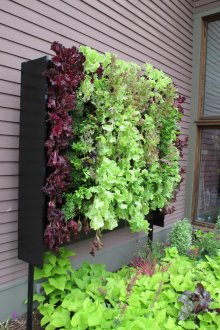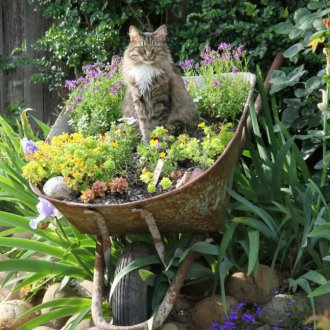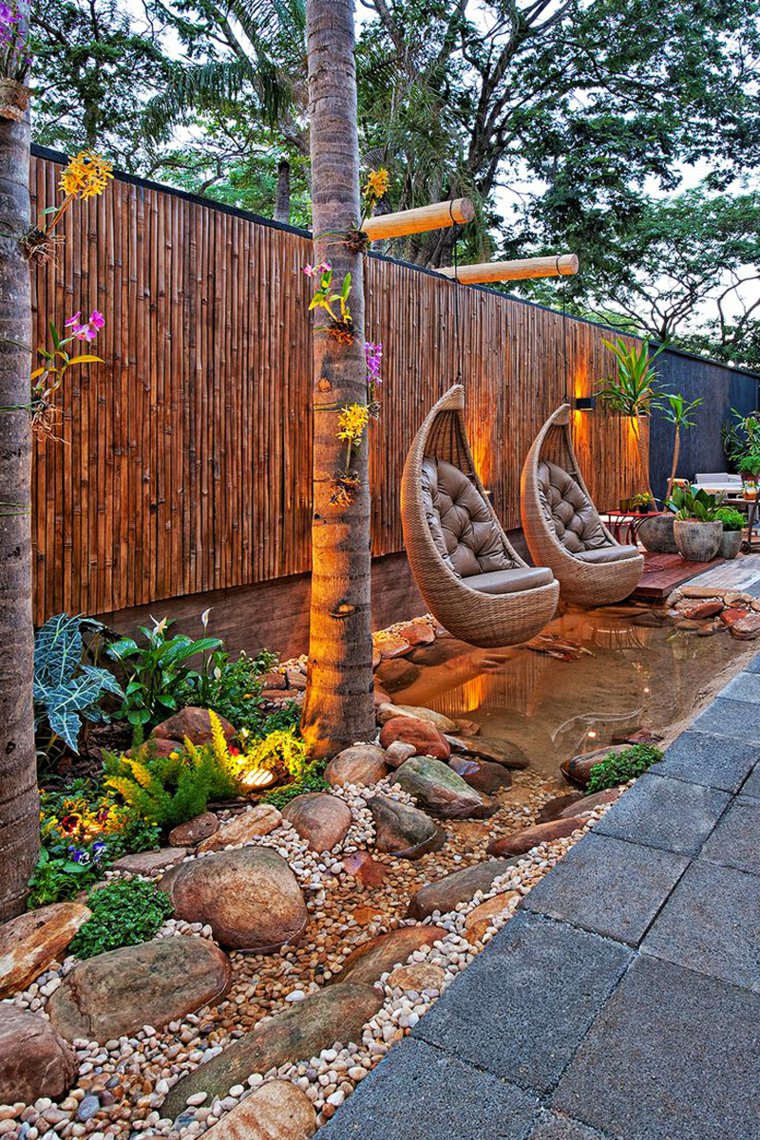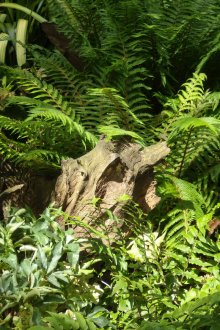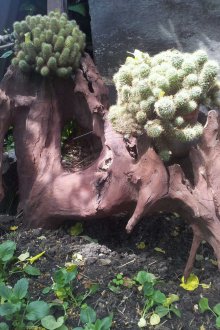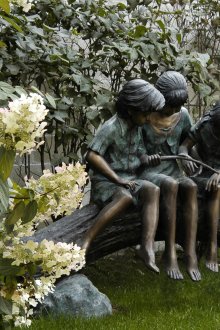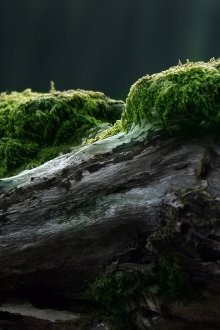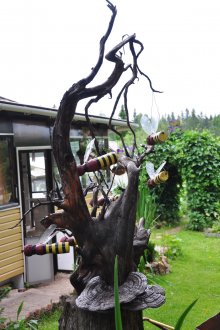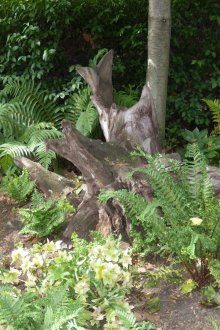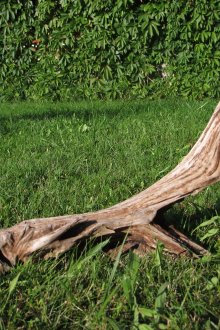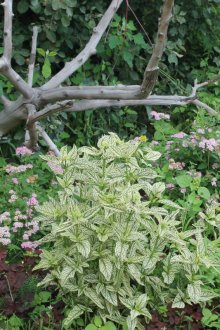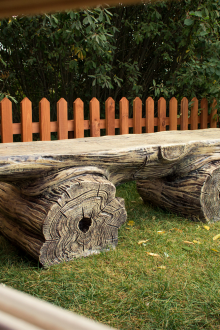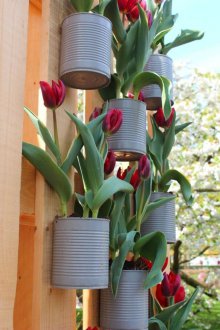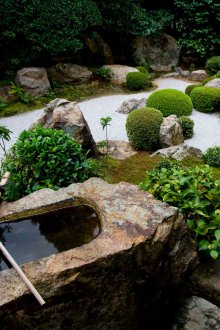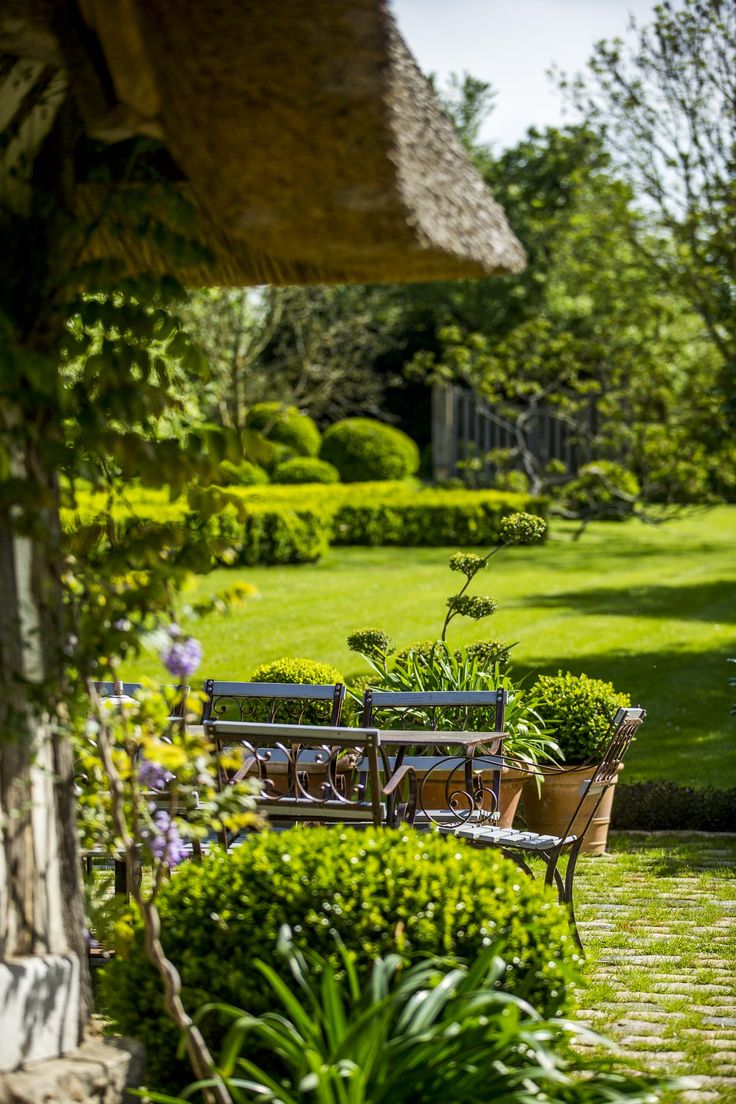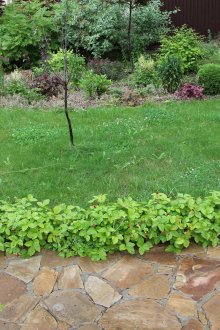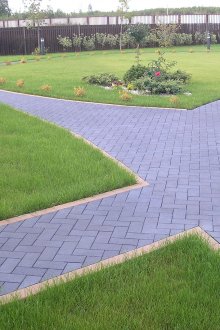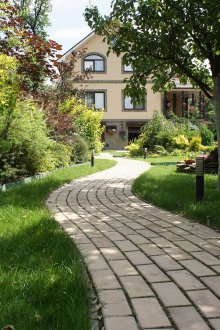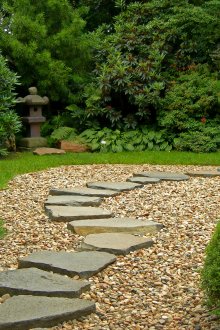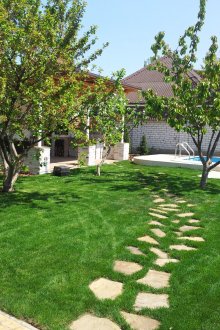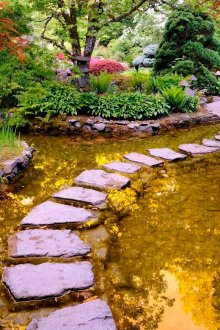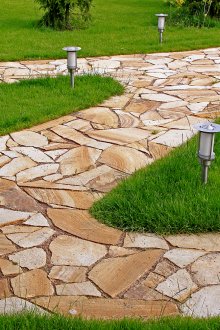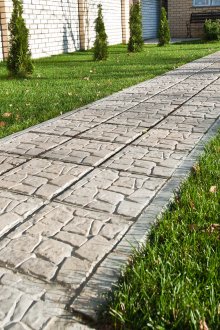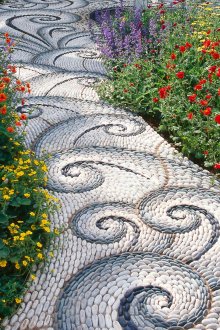Original ideas for the garden (58 photos): flowerbed design and landscape design
The times have already passed when the garden was considered a livelihood. Today, the garden is primarily a spiritual harbor, a secluded place where you can hide from the city bustle, problems and other troubles. Therefore, ideas for the garden are always in demand.
Gardeners are increasingly trying to pay attention not only to agricultural practices, but also devote time to decorating the garden and landscape, realizing interesting design ideas and a creative imagination game with their own hands.
To work on turning the garden into a magical place, flowerbeds, mini-ponds, and other landscaping are connected.
Wattle
Wattle as an idea for a garden or a summer residence is an interesting solution for the design and decor of the site. Of course, he will not replace modern functional barriers, but to create the fabulous mood of Pushkin and Gogol times with your own hands - just right!
The best material for wattle is considered willow twigs. But they are in no way inferior, for example, bushes of raspberries, cut to update the garden. Combining the rods from different bushes, you can create the original color scheme of the wattle fence and its relief pattern (twisting rods of different thicknesses).
Strong pegs are used as pegs on which the rods are braided. But poles tend to rot in the soil layer, so they are regularly replaced. In order to prevent such painstaking work, you can use pipe pieces with diameters of 15-20 mm instead of poles. Since the pipes are much more reliable than poles, they can be driven into the ground less often, and vertically weaved into the spaces between the pipes without driving in pieces of thick branches. Such a design is not only more reliable than the traditional one, but also weaves much easier, since one does not need to think about the reliability of the supporting poles.
As a decor and an additional mood, clay pots with painted funny faces can be hung on the poles protruding from the wattle fence.
Water beds
What to hide, flowerbeds are those summer or garden decorations that gardeners are especially proud of. The selection of flowers of various colors, the shape of their petals, flowering periods, the height of the stems, the density of the leaves, the aroma are only part of the floral design that the gardener focuses on when forming a flower bed.
New solutions for the design of flower beds can be done with your own hands in the form of structures from improvised materials.
But not every gardener can boast that he has original and interesting water-beds made by himself. Meanwhile, it is not at all difficult to realize such ideas for a garden or summer cottage as water beds.
The order of registration of the flowerbed:
- Dig a hole under the flowerbed. The depth should not exceed 50 cm, and the gardener determines the shape and area of the waterbed according to his own wishes.
- The perimeter of the flower bed must be laid out of brick.
- A plastic film is laid at the bottom of the flower bed and covered with a 5 cm layer of sand.
- Plants planted in pots are installed in the center of the flower bed: water lilies, nymphaea, and capsules
- At the edges of the flower bed, the sand layer is made 10-15 cm thicker. Plants such as aquatic iris, wingfly, and dithy can be planted in the ground.
- Fill the flower bed so that the leaves of plants planted in pots float freely on the surface.
- As additional decorations for design and decor, aquatic plants that do not need traction are suitable: duckweed, azolla, vodokras, pistiya, eichhornia, roguelica.
If you fulfill the main condition: plants fill at least half the area of the flower bed, then live decorations will delight the whole season.
As a decor for a flowerbed on foam floors, you can arrange several figurines (toys) in the form of fairy-tale characters: mermaids, fish, frogs.
Aromatic and sound design
Melodious and fragrant decorations are fairly new decor solutions for decorating a garden or summer house. But do not forget that the sound and aroma should be unobtrusive, complementing the background of natural smells and sounds, not crossing out them.
To decorate the aroma of a garden or a summer house, you can use not only traditional flowers and flowering shrubs, but also fragrant herbs.
If you grow spicy herbs "islands" that are not too far and not too close, you can achieve interesting waves of aromas, the gamut of which will vary depending on your location in the garden.
The smell of herbs differs from the smell of flowers by “exoticism” and, indeed, due to the action of aromatic substances can affect a person’s mood. The following herbs are suitable for aromatic "design": hyssop, rosemary, clary sage, thyme, basil, coriander, oregano, lemon balm, mint, caraway and fennel.
“Musical breezes” are best made with your own hands from improvised materials. In this case, you can pick up your own interesting, but unobtrusive sounds.
The most popular as decor and acoustic design are shell pendants, they create a rustling sound resembling the sound of the surf. It’s also easy to make “musical winds” of beads, glass bottles with your own hands. Very beautiful, interesting in appearance and unobtrusive by ear "winds" made of plastic bottles.
If after an urban bustle or a hard day spent in the garden, you sit down on a comfortable bench in the shade, among the aroma of spicy herbs and the rustle of “breezes”, your imagination will draw beautiful landscapes of unknown lands.
Rutaria
Rutarium as an idea for a garden and a summer residence can bring to life very interesting ideas. The intricate forms of tree roots are used in the decor of rutaria, it is called the root garden.
It turns out that for this small area you can find your own magic of decor. We all know how bizarre the roots are. Fantasy, sometimes, at the sight of a small root, can reveal the plot of a fairy tale story. And when you add beautiful combinations and compositions with your own hands from the roots, it’s hard not to freeze in admiration in such a rutary.
The combination of a site for rutarium and for mushroom cultivation may prompt interesting ideas of design and decor. To do this, hemp need a small size, so that they can be sterilized in boiling water. Then, holes with a diameter of 15-20 mm are drilled in the stumps, the mycelium of the mushrooms is mixed with the resulting sawdust and the holes are filled with the resulting mixture. Then hemp is instilled with holes upwards of 10 centimeters and closed for 3 weeks with a lightproof film. Hemp is watered under the base (no need to fill on top).
When beautiful families of mushrooms and oyster mushrooms peep from hemp, and beautiful and interesting compositions from the roots are around, then it feels like you are in a fairy tale! Real mushrooms grown by yourself are, of course, better than any artificial decor.
Garden paths
DIY garden paths will remain your pride for years to come. As improvised materials, you can take river pebbles and used bricks.
The construction of the tracks begins with the markup. The cottage or plot, for sure, already has a favorite trampled path. It’s best to use them for marking. The track should be the same width and even along the entire length.
After marking, the track is leveled and covered with a crushed stone with a layer of 10 cm. Tamped either with a vibrating machine, or with your own hands using a column with handles.
Then, the prepared solution is poured onto the area of the small area and leveled. Pre-washed pebble pebbles are interspersed with a dense pattern in the solution, and the brick is laid on the sides with a curb.
To level the mosaic area, a shield is placed on top and crushed with a massive load. If you wash away the solution from the surface of the pebbles, then interesting mosaic patterns will remain on the track.
When pouring a solution, it is necessary to transfer from one small area to another, and lay wooden partitions between the areas. Partitions are needed so that in severe frosts the frozen solution with mosaic does not crack.





